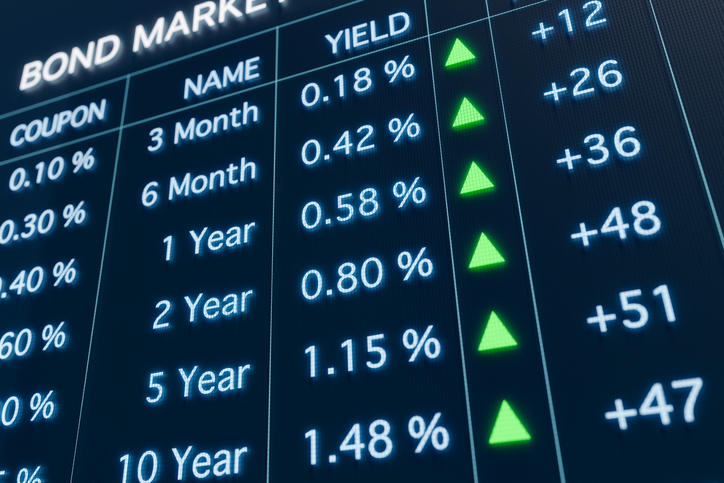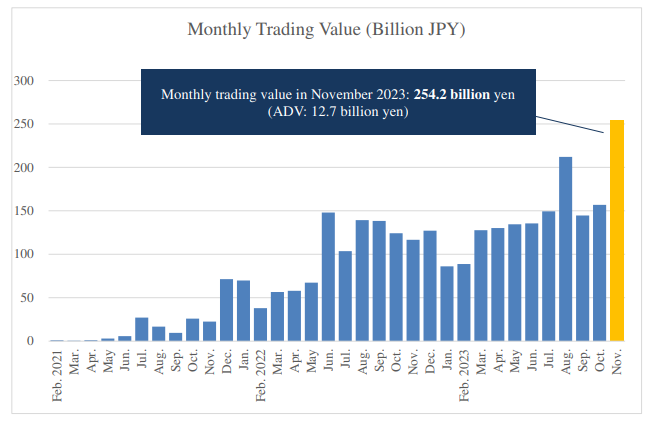Insights
Are Japanese bond investors re-engaging foreign bonds?

Written by Harry Ishihara, Macro Strategist
Since 2020, Japanese bond investors have generally been repatriating into domestic bonds at the expense of US bonds. However, upcoming Fed rate cuts should mean they will be re-engaging the US bond market soon. Cuts will lower both hedge costs and repo funding costs that had been preventing more committed flows. Recent data and headlines imply US bond demand may increase, while Japanese bond demand remains steady at the moment.
Gross purchases
Gross purchases by Japanese investors of foreign bonds[i] were at one point last year over 40 percent lower than their pre-corona peaks. Rising US yields caused gross purchasing activity to taper off to around 30 to 40 trillion yen per month. However, as the arrow in the next graph implies, the pre-corona peaks were about 5 times larger than pre-Abenomics levels. During Abenomics, extraordinary monetary easing resulted in lower domestic yields that forced investors abroad.
US sovereign bonds still favored
As the next graph of net[ii] flows implies, most foreign bond flows involve US sovereign bonds, which include US treasuries, agencies and agency MBS. Most Japanese investors are shy about taking foreign credit risk and seek bonds that are highly rated and liquid. As we wrote in January, they often get special attention by government treasury departments and government bond traders, due to the size of their flows. Pre-corona, it was not uncommon for Japanese flows in US treasuries to be larger than the Fed’s for example.
“Yen-toh” versus dollar-based
The bulk of Japanese investor flows into the US are hedged for currency fluctuations. This usually involves selling FX forwards every 3 months and rolling them for the holding period. These investments/investors are often called “Yen-toh” (pronounced En-toe), short for yen-based investing/investors. Other investments are funded in USD, mostly via GC repos, and are sometimes called dollar-based. Many investors can do both.
Importantly, the hedge cost and repo costs are both a function of US short term rates. For example, the cost of a 3m rolling hedge would mostly reflect the difference between US and Japan 3m rates, while GC repo rates closely follow Fed Funds. Since late 2022 or so, US 10-year yields probably looked negative for both “Yen-toh” and dollar-based investors as the next graph shows.
Signs of re-engagement?
For the past few years, a bearish US bond market combined with high hedge costs and repo costs had kept Japanese flows into the US on the slow side. Residual flows had probably reflected two types: 1) short term trading and 2) “Yen-toh” into Agency MBS and corporate bonds for their spread. With similar hurdles in other regions, a strong “repatriation” from foreign bonds into JGB’s has been a trend, as the next graph shows.
Why the repatriation?
As the previous graph shows, the gross purchases of JGBs started to increase around 2021 at the expense of foreign bonds. This coincides with the beginning of the post-corona bear market in US long term bonds. Other data imply that Japanese life insurers and to a lesser extent, Japanese banks led that trend.
Rising yields in the US and Europe pushed Japanese yields to higher, more attractive levels, driving the repatriation from abroad. The steepening of the JGB yield curve that resulted was ultimately welcomed by investors, who had been facing negative yields from the short end to the 10 year until then, as the next graph shows. Interestingly, the steepening was also welcomed by the stock market, as steeper yield curves are seen to help higher profitability at financial institutions.
Next move
Looking forward, expected Fed cuts combined with BOJ hikes should lead to lower US repo rates and hedge costs, steepening the US yield curve and bringing Japanese banks and life insurer flows back into US bonds. This move could spark a wave of new products, such as bond ETF’s. For example, between 2020 and 2023, TSE-listed global bond ETF’s have doubled in number and quintupled in net assets, led by demand from domestic financial institutions as well as foreign entities. A recent headline summed up expectations well: “Japanese money to buy the rate-cutting countries – targeting US and China while avoiding Europe’s fiscal woes” (Nikkei, Aug 24). Weekly data are already showing signs of a comeback, with five consecutive weeks of positive net flows (bars) and 100 billion dollars in gross purchases in the latest week (line).
So far, JGB demand remains intact however, as evidenced by recent 30 and 10 year auctions and a range-bound 10 year yield. Bond demand appears to be supported by evidence of a US slowdown and US/Japan stock market volatility.
Related posts from this author:
Understanding Japanese Investor Flows into the Global Bond Markets, Jan 2024
All other titles (search engine result)
[i] We will largely stick to the Ministry of Finance definition of foreign bonds, which means non-domestic bonds.
[ii] Net flows=Gross purchases minus gross sales & redemptions. In the first graph we used gross purchases to reflect gross trading activity. For simplicity we did not show gross sales & redemptions, which are of a similar scale to gross purchases. Market participants and the media follow net flows as a better indicator of the impact on yields, which we used here.
Related links









